The red tape and hassle associated with doing business with the government are legendary. Government buys at the speed of glaciers; in the meantime, technology evolves at the speed of Moore’s Law (that is, really fast).
This creates a huge problem. While nobody expects the government to be agile or innovative, we at least expect the government to have down the technology basics–rudimentary cybersecurity, basic response times, and some form of understandable citizen interfaces.
Unfortunately, none of this is happening. Government lags years behind the private sector with its IT infrastructure. Innovation is desperately needed to leapfrog the government from COBOL-based mainframes.
Agencies have taken note of this innovation gap. Several are addressing it head-on with new outreach efforts and agile procurement techniques. In terms of innovation outreach, DOD, DHS, and others are opening liaison offices in Silicon Valley, Austin, Boston, and Research Triangle.
These DOD offices are intended to make DOD a more transparent and attractive potential market for emerging technology companies.
These outreach efforts may or may not pay off. The DiUX initiatives had the direct personal visibility of former Defense Secretary Ash Carter, a scientist by training and avocation. Whether Secretary James Mattis assigns a similar focus upon these programs is unclear.
Other recent developments directly target the cumbersome process of procurement. These efforts focus on speeding up contracting and making monies available to innovative companies using streamlined procurement procedures. Here I must get a bit nerdy.
Two new sections in the National Defense Authorization Act promote a new fast-track process for innovators to highlight their capabilities within the Federal marketplace.
These provisions, called Section 880 of FY2017 NDAA, and Section 897 of this year’s NDAA, establish new and streamlined program authorities. Section 880 establishes pilot programs at DHS and GSA to acquire innovative technology up to a cap of $10 million using general solicitation competition procedures. What that means is that agencies are now empowered to carry out a pilot program (called a “commercial solutions opening pilot program”) that is acquired through a competitive selection of proposals resulting from a general solicitation and the peer review of such proposals. Think of this as an agency “shark tank” with a same-day funding decision.
Acquisitions can occur using streamlined procedures (think contract award within 30 days of agency “shark tank”). Using these streamlined procedures, the agencies would be able to accelerate the transition of new technological solutions into operational use by the agency users. These are perfectly legal, and are competitive procedures under the Competition in Contracting Act. Guidance on the use of these procedures is in process now at GSA and DHS.
This year, the NDAA took this innovative approach a step further. In Section 896 of this year’s NDAA, this programs’ use of merit-based selection procedures was expanded to encompass all pilot programs, as well as the Small Business Innovative Research Program and the Small Business Technology Transfer Program.
Deeming the use of this form of accelerated review and approval for innovative proposals to meet the requirements of competitive procedures under CICA and the FAR is huge. It legally authorizes agencies to step back from the usual, cumbersome forms of open market procurements and greatly streamline both the time and effort required to get under contract.
Industry should support these innovative approaches for innovative companies. And innovative companies should be aware of these fast-track developments as a back-door channel into the Federal market. How else will the innovations of Silicon Valley become an integral part of government?

 MeriTalk compiles a weekly roundup of contracts and other industry activity. Stay up to date on everything that’s happening in the Federal Information Technology community. MeriTalk.com keeps you informed about the topics that mean the most to you and creates a targeted platform for cooperation, public-private dialogue, highlighting innovation, and sharing informed opinions. This week:
MeriTalk compiles a weekly roundup of contracts and other industry activity. Stay up to date on everything that’s happening in the Federal Information Technology community. MeriTalk.com keeps you informed about the topics that mean the most to you and creates a targeted platform for cooperation, public-private dialogue, highlighting innovation, and sharing informed opinions. This week: 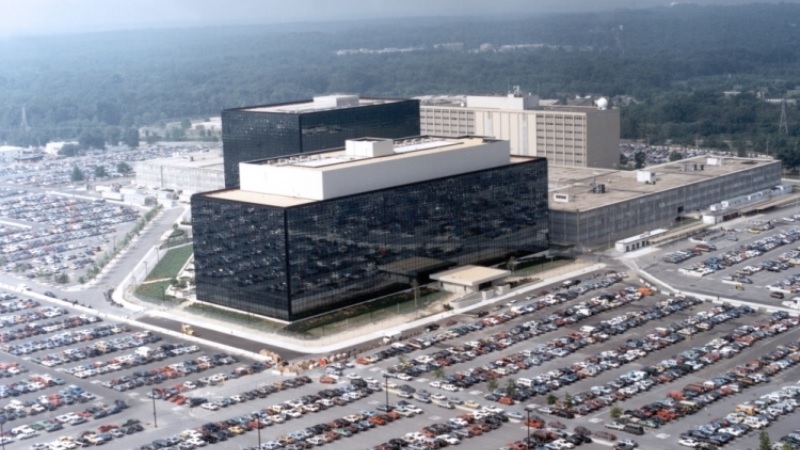 Rogers said Friday at an event co-sponsored by AFCEA International and the U.S. Naval Institute that he questions whether developing all cyber weapons within government is sustainable. The alternative, which Rogers said could be a reality within the next five to 10 years, would be for Cyber Command to tell companies exactly what type of weapon the agency needed to be built and allow the companies
Rogers said Friday at an event co-sponsored by AFCEA International and the U.S. Naval Institute that he questions whether developing all cyber weapons within government is sustainable. The alternative, which Rogers said could be a reality within the next five to 10 years, would be for Cyber Command to tell companies exactly what type of weapon the agency needed to be built and allow the companies 
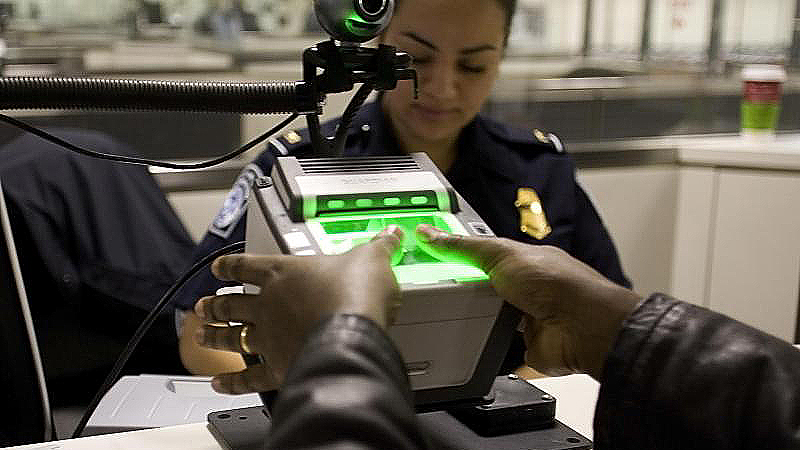 Nearly 13 years and several missed deadlines later, the goal of achieving that fully integrated system remains elusive for the Department of Homeland Security, according to a new report by the Government Accountability Office. More than 500,000 visitors overstay their visas every year, according to 2015 data released by U.S. Customs and Border Protection. CBP said it would release its 2016 overstay report by Feb. 28, but as of press time had
Nearly 13 years and several missed deadlines later, the goal of achieving that fully integrated system remains elusive for the Department of Homeland Security, according to a new report by the Government Accountability Office. More than 500,000 visitors overstay their visas every year, according to 2015 data released by U.S. Customs and Border Protection. CBP said it would release its 2016 overstay report by Feb. 28, but as of press time had  Stopping insider threats relies more on addressing human problems than technological ones, according to Bill Evanina, national counterintelligence executive and director of the U.S. National Counterintelligence
Stopping insider threats relies more on addressing human problems than technological ones, according to Bill Evanina, national counterintelligence executive and director of the U.S. National Counterintelligence 
 Multiple reports surfaced this month that White House employees close to President Donald Trump have been using Confide to prevent the type of email hacking and release of information that occurred at the Democratic National Committee. Confide encrypts messages from end to end, allowing only the sender and receiver to read them. Once the message is read,
Multiple reports surfaced this month that White House employees close to President Donald Trump have been using Confide to prevent the type of email hacking and release of information that occurred at the Democratic National Committee. Confide encrypts messages from end to end, allowing only the sender and receiver to read them. Once the message is read,  The General Services Administration’s 18F “routinely disregarded and circumvented” long-established GSA IT security and acquisition policies for every major system it operated, according to a new inspector general report. The audit found that none of 18F’s 18 information systems had proper authorizations to operate within GSA. In addition, 86 percent of 18F’s software items were not submitted for review by the GSA
The General Services Administration’s 18F “routinely disregarded and circumvented” long-established GSA IT security and acquisition policies for every major system it operated, according to a new inspector general report. The audit found that none of 18F’s 18 information systems had proper authorizations to operate within GSA. In addition, 86 percent of 18F’s software items were not submitted for review by the GSA 
 When government agencies face a network breach, having a planned response protocol in place can make all the difference, according to industry experts. “The first thing that they have to do is they have to really take a hard look at their incident response protocol,” said Rob Potter, vice president of public sector at Symantec. He added that recovering from a breach can become significantly harder without a response
When government agencies face a network breach, having a planned response protocol in place can make all the difference, according to industry experts. “The first thing that they have to do is they have to really take a hard look at their incident response protocol,” said Rob Potter, vice president of public sector at Symantec. He added that recovering from a breach can become significantly harder without a response 






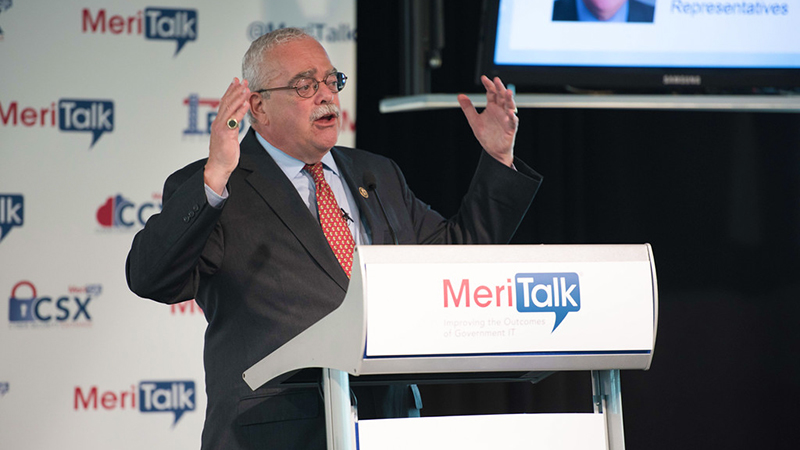

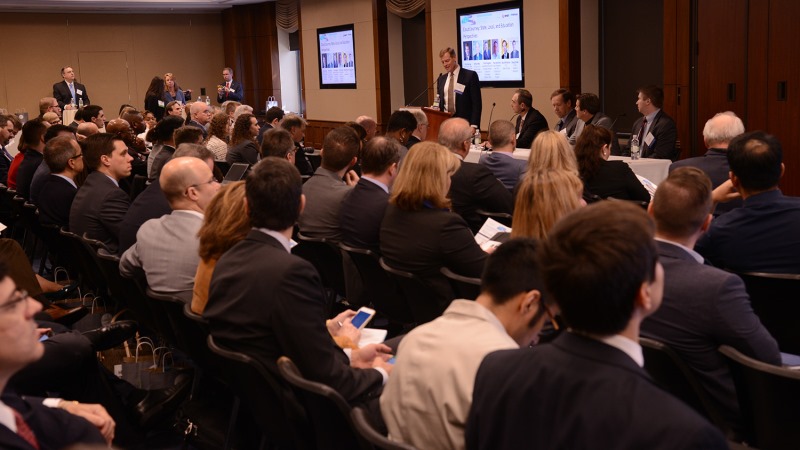
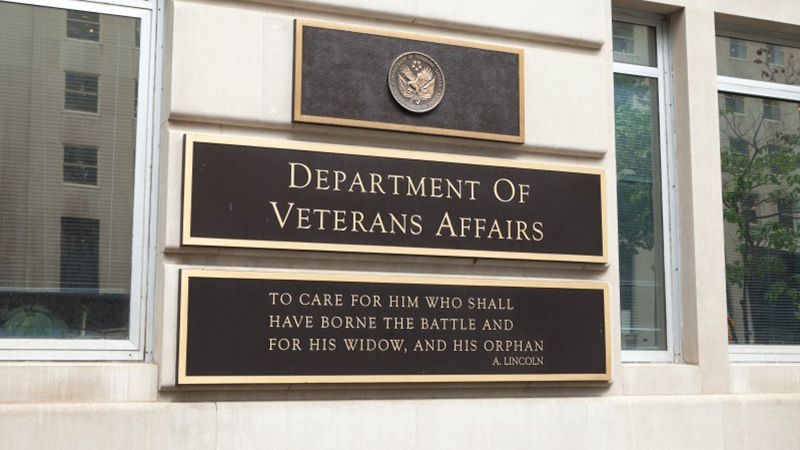



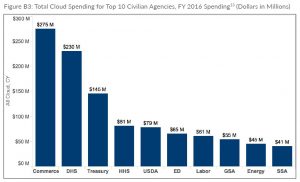



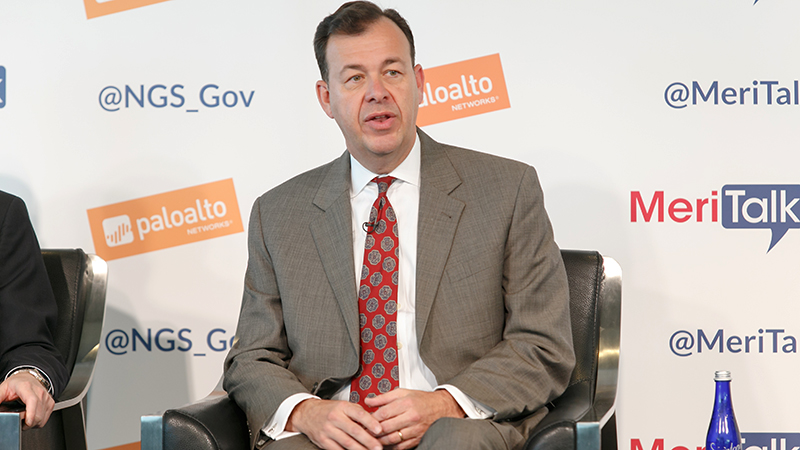





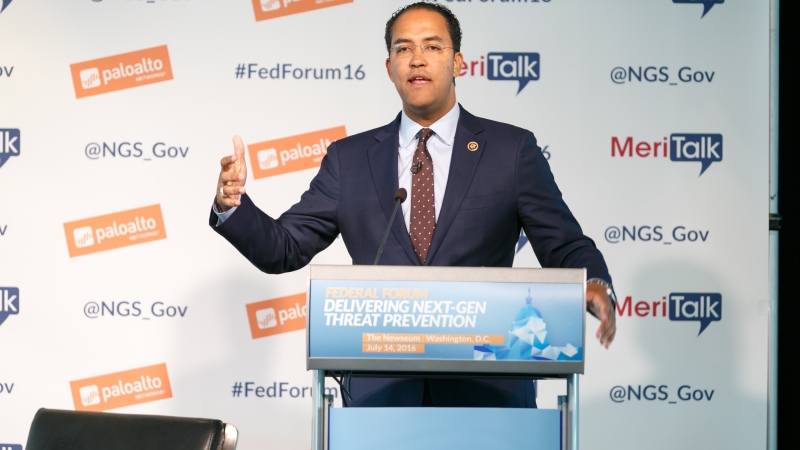



 CIA historians have written entire books on how agency officials and analysts should get to know different presidents and how to most effectively communicate vital intelligence information to the most powerful person in the world. The truth is it has very little to do with the intelligence collected on Russian hacking activities. Many of those same officials—all of whom spoke on condition of anonymity due to the sensitivity of the subject matter—describe an already tumultuous web of relationships among the most
CIA historians have written entire books on how agency officials and analysts should get to know different presidents and how to most effectively communicate vital intelligence information to the most powerful person in the world. The truth is it has very little to do with the intelligence collected on Russian hacking activities. Many of those same officials—all of whom spoke on condition of anonymity due to the sensitivity of the subject matter—describe an already tumultuous web of relationships among the most  Coalfire, the No. 2 FedRAMP 3PAO, announced last month it has acquired Veris Group, the leading provider of the mandatory security assessments for cloud service providers that want to sell their products and services to Federal agencies. The acquisition gives Coalfire nearly five times the number of FedRAMP authorizations as
Coalfire, the No. 2 FedRAMP 3PAO, announced last month it has acquired Veris Group, the leading provider of the mandatory security assessments for cloud service providers that want to sell their products and services to Federal agencies. The acquisition gives Coalfire nearly five times the number of FedRAMP authorizations as  The inspector general for the Department of Homeland Security lodged an objection to the way the Transportation Security Administration handles information it deems Sensitive Security Information in a recent report on IT system security. TSA redacted six pieces of information that it considered SSI from the report. However, this information had already been publicly released in previous OIG reports. “None of these redactions will make us safer and simply highlight the inconsistent and arbitrary nature of decisions that TSA makes
The inspector general for the Department of Homeland Security lodged an objection to the way the Transportation Security Administration handles information it deems Sensitive Security Information in a recent report on IT system security. TSA redacted six pieces of information that it considered SSI from the report. However, this information had already been publicly released in previous OIG reports. “None of these redactions will make us safer and simply highlight the inconsistent and arbitrary nature of decisions that TSA makes  The report said that President Obama made the mistake of expecting that the incorporation of Silicon Valley executives in decision-making would automatically advance the United States’ cybersecurity prowess. The government is a complex system with different rules, relationships, and procedures than the typical technology company, which is one reason why these partnerships haven’t worked, according to the report. “There is no technological solution to the problem of cybersecurity, at least any time soon, so turning to technologists was unproductive,”
The report said that President Obama made the mistake of expecting that the incorporation of Silicon Valley executives in decision-making would automatically advance the United States’ cybersecurity prowess. The government is a complex system with different rules, relationships, and procedures than the typical technology company, which is one reason why these partnerships haven’t worked, according to the report. “There is no technological solution to the problem of cybersecurity, at least any time soon, so turning to technologists was unproductive,”  The app is significant because of President-elect Donald Trump’s promise to issue a temporary moratorium on new agency regulations that are not compelled by Congress or public safety in order to encourage businesses to hire more workers. Trump also announced that “for every one new regulation, two old regulations must be eliminated.” The app allows users to search for regulations based on when they were completed, if they’re still being reviewed, or by agency. There are 96 regulations pending and 98 regulations recently concluded
The app is significant because of President-elect Donald Trump’s promise to issue a temporary moratorium on new agency regulations that are not compelled by Congress or public safety in order to encourage businesses to hire more workers. Trump also announced that “for every one new regulation, two old regulations must be eliminated.” The app allows users to search for regulations based on when they were completed, if they’re still being reviewed, or by agency. There are 96 regulations pending and 98 regulations recently concluded  More and more Federal agencies will adopt bring your own device policies in 2017, and industries will keep up with solutions to secure the devices, according to Glenn Roth, Citrix senior systems engineer for U.S. public sector. Several Federal agencies, including some of Roth’s customers, already have BYOD policies, which allow employees to work on their own laptops or tablets. The system of allowing employees to use their own devices offers opportunities for agencies to save money on Federally funded devices. Also, Roth said that employees are generally more comfortable working on their own computers than on
More and more Federal agencies will adopt bring your own device policies in 2017, and industries will keep up with solutions to secure the devices, according to Glenn Roth, Citrix senior systems engineer for U.S. public sector. Several Federal agencies, including some of Roth’s customers, already have BYOD policies, which allow employees to work on their own laptops or tablets. The system of allowing employees to use their own devices offers opportunities for agencies to save money on Federally funded devices. Also, Roth said that employees are generally more comfortable working on their own computers than on  The U.S. government has not done enough to support the Internet of Things, which could cause the nation to miss out on social and economic benefits, according to a Center for Data Innovation report released last week. The report acknowledged that the government has participated in many small projects to help IoT, but these projects are insufficient to foster the growth of this technology as quickly as would be “desirable.” The report suggested a large-scale, coordinated government effort, such as a national strategy for the Internet of Things. The act also advocated for a national IoT strategy. “As the Obama administration draws to a close, it is unlikely the Federal government will make significant additional progress toward a national strategy,”
The U.S. government has not done enough to support the Internet of Things, which could cause the nation to miss out on social and economic benefits, according to a Center for Data Innovation report released last week. The report acknowledged that the government has participated in many small projects to help IoT, but these projects are insufficient to foster the growth of this technology as quickly as would be “desirable.” The report suggested a large-scale, coordinated government effort, such as a national strategy for the Internet of Things. The act also advocated for a national IoT strategy. “As the Obama administration draws to a close, it is unlikely the Federal government will make significant additional progress toward a national strategy,”  As the holidays roll around, the MeriTalk staff compiled a list of helpful technology gifts for agency employees. The gifts range from serious to silly depending on each agency’s mission and technology needs. Check out
As the holidays roll around, the MeriTalk staff compiled a list of helpful technology gifts for agency employees. The gifts range from serious to silly depending on each agency’s mission and technology needs. Check out During the event, consortiums were touted as a way to address important S&T issues. The industry day, held on Dec. 5 in Menlo Park, Calif., served as a way for tech start-ups to learn about funding opportunities within S&T. The department has hosted five industry days prior to this one; this particular event sought out companies that could provide defense solutions for
During the event, consortiums were touted as a way to address important S&T issues. The industry day, held on Dec. 5 in Menlo Park, Calif., served as a way for tech start-ups to learn about funding opportunities within S&T. The department has hosted five industry days prior to this one; this particular event sought out companies that could provide defense solutions for  President-elect Donald Trump met with technology executives Wednesday and asked them for their opinions on trade. “There are a lot of border restrictions and a lot of border problems,” Trump said during the meeting in New York. “I’m here to help you folks do well,”
President-elect Donald Trump met with technology executives Wednesday and asked them for their opinions on trade. “There are a lot of border restrictions and a lot of border problems,” Trump said during the meeting in New York. “I’m here to help you folks do well,”  Tom Wheeler, chairman of the Federal Communications Commission, announced that he will leave the agency on Jan. 20, 2017. “It has been a privilege to work with my fellow commissioners to help protect consumers, strengthen public safety and cybersecurity, and ensure fast, fair, and open networks for all Americans,” Wheeler said in a statement. The Republican commissioners have vowed to overturn net neutrality and other Wheeler-era regulations once the commission enters
Tom Wheeler, chairman of the Federal Communications Commission, announced that he will leave the agency on Jan. 20, 2017. “It has been a privilege to work with my fellow commissioners to help protect consumers, strengthen public safety and cybersecurity, and ensure fast, fair, and open networks for all Americans,” Wheeler said in a statement. The Republican commissioners have vowed to overturn net neutrality and other Wheeler-era regulations once the commission enters  A lack of clear technology policy established during Donald’s Trump’s campaigning and preparations as president-elect is making it difficult to determine what the future of tech policy is going to look like, according to experts speaking at an Information Technology Innovation Foundation (ITIF)
A lack of clear technology policy established during Donald’s Trump’s campaigning and preparations as president-elect is making it difficult to determine what the future of tech policy is going to look like, according to experts speaking at an Information Technology Innovation Foundation (ITIF)  My Capitol Hill listening post has picked up strong signals that Mark Busby, the former program manager for the Department of Justice’s Data Center Transformation Initiative, earlier this month took over as the new chief technology officer at the National Archives and Records Administration.
My Capitol Hill listening post has picked up strong signals that Mark Busby, the former program manager for the Department of Justice’s Data Center Transformation Initiative, earlier this month took over as the new chief technology officer at the National Archives and Records Administration. Tenable Network Security announced it has hired former RSA President Amit Yoran to take over as the company’s new chairman and CEO.
Tenable Network Security announced it has hired former RSA President Amit Yoran to take over as the company’s new chairman and CEO. My Fort Meade eavesdropping station has picked up indications and warnings via the Project on Government Oversight that NSA Director Adm. Michael Rogers has recommended the termination of George Ellard as the agency’s inspector general. According to unconfirmed intelligence picked up by POGO, a review board determined that Ellard–who has publicly criticized NSA leaker Edward Snowden for not approaching the IG before leaking data to news outlets–had retaliated against another agency whistleblower.
My Fort Meade eavesdropping station has picked up indications and warnings via the Project on Government Oversight that NSA Director Adm. Michael Rogers has recommended the termination of George Ellard as the agency’s inspector general. According to unconfirmed intelligence picked up by POGO, a review board determined that Ellard–who has publicly criticized NSA leaker Edward Snowden for not approaching the IG before leaking data to news outlets–had retaliated against another agency whistleblower.

 Despite new policies designed to give chief information officers more spending power, some Federal CIOs don’t see any improvement in acquiring the technology they need to keep their systems secure. Luke McCormack, CIO of the Department of Homeland Security, said that whether or not MGT passes the Senate, systems will remain unfunded. Despite this, claims that the fund will cost about $9 billion prevent an agreement
Despite new policies designed to give chief information officers more spending power, some Federal CIOs don’t see any improvement in acquiring the technology they need to keep their systems secure. Luke McCormack, CIO of the Department of Homeland Security, said that whether or not MGT passes the Senate, systems will remain unfunded. Despite this, claims that the fund will cost about $9 billion prevent an agreement  The Department of Veterans Affairs this week launched a new website to raise awareness of the agency’s Digital Health Platform–a cloud-based approach to integrating veterans health data to produce what the agency calls real-time, analytics-driven, personalized care. VA’s current EHR, known as VistA, is a 40-year-old system that the agency continues to modernize while it debates a potential commercial replacement. According to the new website, “DHP provides a comprehensive dashboard spanning a veteran’s
The Department of Veterans Affairs this week launched a new website to raise awareness of the agency’s Digital Health Platform–a cloud-based approach to integrating veterans health data to produce what the agency calls real-time, analytics-driven, personalized care. VA’s current EHR, known as VistA, is a 40-year-old system that the agency continues to modernize while it debates a potential commercial replacement. According to the new website, “DHP provides a comprehensive dashboard spanning a veteran’s  The third and most recent FITARA scorecard was released Dec. 6. DOT, which has received overall D’s on the previous two scorecards, received an F+ this time around. A spokesperson said that the report card does not reflect the
The third and most recent FITARA scorecard was released Dec. 6. DOT, which has received overall D’s on the previous two scorecards, received an F+ this time around. A spokesperson said that the report card does not reflect the  A majority of the 24 major agencies defined under the CFO Act are expected to meet the deadline to begin reporting their spending information. Under the Digital Accountability and Transparency Act of 2014 (DATA Act), Federal agencies are required to begin reporting their spending information to the Department of the Treasury and the Office of Management and
A majority of the 24 major agencies defined under the CFO Act are expected to meet the deadline to begin reporting their spending information. Under the Digital Accountability and Transparency Act of 2014 (DATA Act), Federal agencies are required to begin reporting their spending information to the Department of the Treasury and the Office of Management and  Incumbent: Gundeep Ahluwalia
Incumbent: Gundeep Ahluwalia Incumbent: Jonathan Alboum
Incumbent: Jonathan Alboum
 Incumbent: Sonny Bhagowalia
Incumbent: Sonny Bhagowalia Incumbent: Sylvia Burns
Incumbent: Sylvia Burns Police departments across the country that received Federal grants for body worn cameras are concerned about sharing information with the agencies responsible for this funding. Some police departments have gone so far to as to say they would not share body camera footage unless Federal agencies compelled them. Body cameras that are turned on all the time can be a double-edged sword. While these constantly running devices could potentially improve officer accountability in certain cases, there are also situations in which this content
Police departments across the country that received Federal grants for body worn cameras are concerned about sharing information with the agencies responsible for this funding. Some police departments have gone so far to as to say they would not share body camera footage unless Federal agencies compelled them. Body cameras that are turned on all the time can be a double-edged sword. While these constantly running devices could potentially improve officer accountability in certain cases, there are also situations in which this content  An effort led by Sen. Ron Wyden, D-Ore., to block or delay changes to Rule 41 of the Federal Rules of Criminal Procedure failed to pass the Senate floor on Wednesday, causing the changes to the rule to go into effect at midnight on Dec. 1. The changes will allow law enforcement to obtain warrants to search computers in an unknown location and to search any device that the hacker has broken into, potentially granting access to multiple privately owned computers with one warrant. The ACLU is disappointed that Congress did not halt
An effort led by Sen. Ron Wyden, D-Ore., to block or delay changes to Rule 41 of the Federal Rules of Criminal Procedure failed to pass the Senate floor on Wednesday, causing the changes to the rule to go into effect at midnight on Dec. 1. The changes will allow law enforcement to obtain warrants to search computers in an unknown location and to search any device that the hacker has broken into, potentially granting access to multiple privately owned computers with one warrant. The ACLU is disappointed that Congress did not halt 
 IBM suggested a new model of education, which includes six years of high school, in a letter to President-elect Donald Trump from Nov. 15. Ginni Rometty, chief executive officer of IBM, said that there will soon be 100 schools that follow this method across the country. After their third year, they’re eligible to take at least
IBM suggested a new model of education, which includes six years of high school, in a letter to President-elect Donald Trump from Nov. 15. Ginni Rometty, chief executive officer of IBM, said that there will soon be 100 schools that follow this method across the country. After their third year, they’re eligible to take at least 


